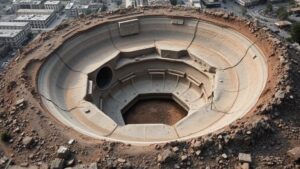Using Modern Tools to Simulate Clues Found in Historical Riddles
Using Modern Tools to Simulate Clues Found in Historical Riddles
Historical riddles captivate the imagination, connecting the present with the past through layers of meaning and symbolism. As technology has evolved, so too has our ability to analyze and interact with these intricate puzzles. Modern tools, from computer simulations to algorithmic analysis, are empowering scholars, enthusiasts, and educators alike to delve deeper into historical riddles, revealing insights that were previously obscured by time.
The Historical Context of Riddles
Riddles have a rich history that spans cultures and epochs, serving various functions, from entertainment to educational devices. Sphinxs riddle in Greek mythology is perhaps one of the most famous examples, but riddles can be found in ancient texts across the globe. For example, the riddles in the Old English poem The Exeter Book offer a window into the linguistic and cultural complexities of the Anglo-Saxon era.
Understanding the historical context of these riddles is essential; it provides a foundation for utilizing modern tools effectively. Historical riddles often incorporate local customs, folklore, and language nuances that can be difficult to simulate or interpret without context.
Modern Tools and Technologies
The advent of modern technology has transformed how we approach the analysis of historical riddles. Several tools are particularly noteworthy:
- Natural Language Processing (NLP): Algorithms that analyze written text can assist in deciphering riddles by identifying patterns, themes, and language structures.
- Data Visualization Software: Tools like Tableau can create visual representations of riddle patterns, making complex riddles more accessible.
- 3D Modeling and Augmented Reality: These technologies can recreate historical settings, allowing users to engage with riddles in their original contexts.
Each of these tools plays a distinct role in peeling back the layers of meaning embedded in historical riddles.
Case Studies: Practical Applications
Let’s explore how these tools have been effectively applied to real-world riddles:
Example 1: The Riddles of the Exeter Book
Utilizing NLP, researchers analyzed patterns in the riddles found in The Exeter Book. They developed algorithms capable of identifying commonly used metaphors and themes, such as nature and mortality. By processing the text of all riddles, they could create a comprehensive linguistic map. This approach not only enriched academic understanding but also informed modern educational methods, allowing students to better grasp Old English.
Example 2: The Riddle of the Sphinx
In a project blending 3D modeling and history, scholars reconstructed the environment of the Sphinx using augmented reality. Participants could walk through a simulation, interact with the riddle, and engage in discussions about its thematic elements of knowledge, human condition, and existential inquiry. This immersive experience helped preserve the riddles context while making it relevant for contemporary audiences.
Challenges and Limitations
While modern tools provide significant advancements, challenges remain. One concern is the potential for oversimplification. Riddles inherently contain layered meanings, and algorithmic interpretation may strip away nuances that hold cultural significance. Plus, reliance on technology risks marginalizing traditional scholarship methods, which have their own merits.
Also, historical biases embedded within the algorithms themselves can lead to skewed interpretations. It is crucial for researchers to remain vigilant about these limitations and ensure that modern tools complement rather than replace traditional methods.
Actionable Takeaways
For educators, scholars, and riddle enthusiasts, the integration of modern tools into the study of historical riddles presents exciting opportunities:
- Explore local universities or online platforms that offer courses in computational linguistics and NLP to enhance understanding.
- Use data visualization software to develop engaging presentations on riddles and their meanings.
- Participate in collaborative projects envisioning historical contexts using 3D modeling, bringing riddles to life for audiences.
As technology continues to evolve, the exploration of historical riddles promises to enrich our understanding of human thought and culture, bridging the past with the present and future.



